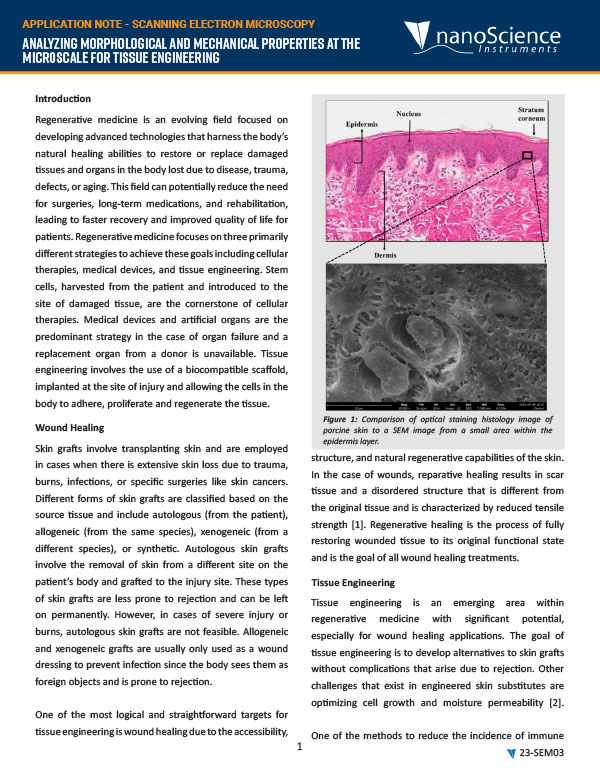Regenerative medicine is an evolving field focused on developing advanced technologies that harness the body’s natural healing abilities to restore or replace damaged tissues and organs in the body lost due to disease, trauma, defects, or aging. This field can potentially reduce the need for surgeries, long-term medications, and rehabilitation, leading to faster recovery and improved quality of life for patients. Regenerative medicine focuses on three primarily different strategies to achieve these goals including cellular therapies, medical devices, and tissue engineering. Stem cells, harvested from the patient and introduced to the site of damaged tissue, are the cornerstone of cellular therapies. Medical devices and artificial organs are the predominant strategy in the case of organ failure and a replacement organ from a donor is unavailable. Tissue engineering involves the use of a biocompatible scaffold, implanted at the site of injury and allowing the cells in the body to adhere, proliferate and regenerate the tissue.
Wound Healing
Skin grafts involve transplanting skin and are employed in cases when there is extensive skin loss due to trauma, burns, infections, or specific surgeries like skin cancers. Different forms of skin grafts are classified based on the source tissue and include autologous (from the patient), allogeneic (from the same species), xenogeneic (from a different species), or synthetic. Autologous skin grafts involve the removal of skin from a different site on the patient’s body and grafted to the injury site. These types of skin grafts are less prone to rejection and can be left on permanently. However, in cases of severe injury or burns, autologous skin grafts are not feasible. Allogeneic and xenogeneic grafts are usually only used as a wound dressing to prevent infection since the body sees them as foreign objects and is prone to rejection.


